All Posts > Fruit Trees > Perennials > Plant Profiles
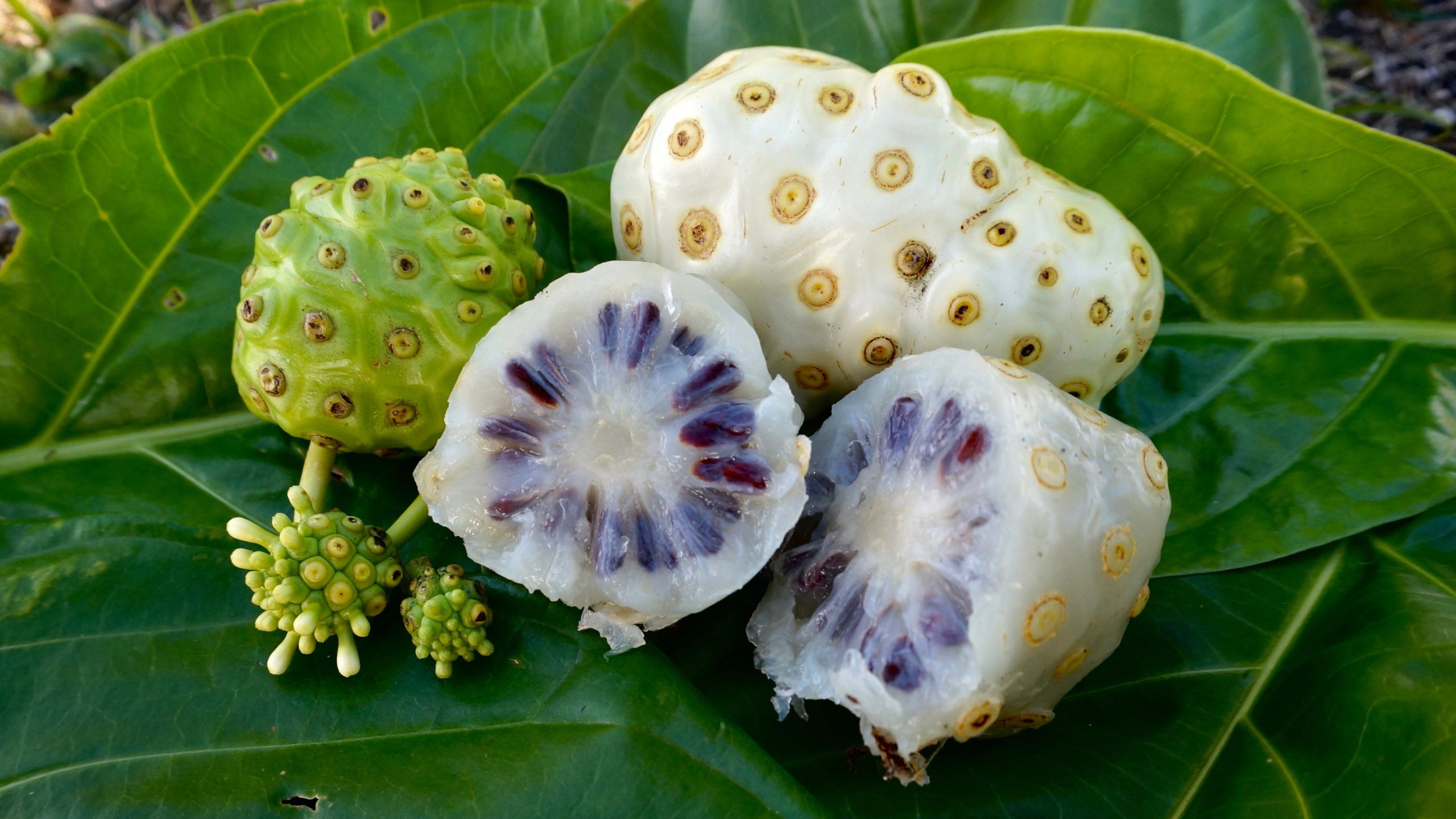
Introducing the Noni
The noni is a tropical fruit that is known for its medicinal properties and cheese like smell and taste. Most people find this smell and taste to be too overpowering to eat, so a new challenge has arisen on the internet where the goal is to eat the noni fruit. In these challenges the fruit is often referred to as either “vomit fruit” or “puke fruit.” I find these names to be a bit of an exaggeration.
The noni belongs to the Rubiaceae family, otherwise known as the coffee family. It is native to Southeast Asia, but it can now be seen naturalized in many tropical areas all over the world. Locals eat it it fresh, fermented, or cooked. Different parts of the tree are also used for medicinal purposes.
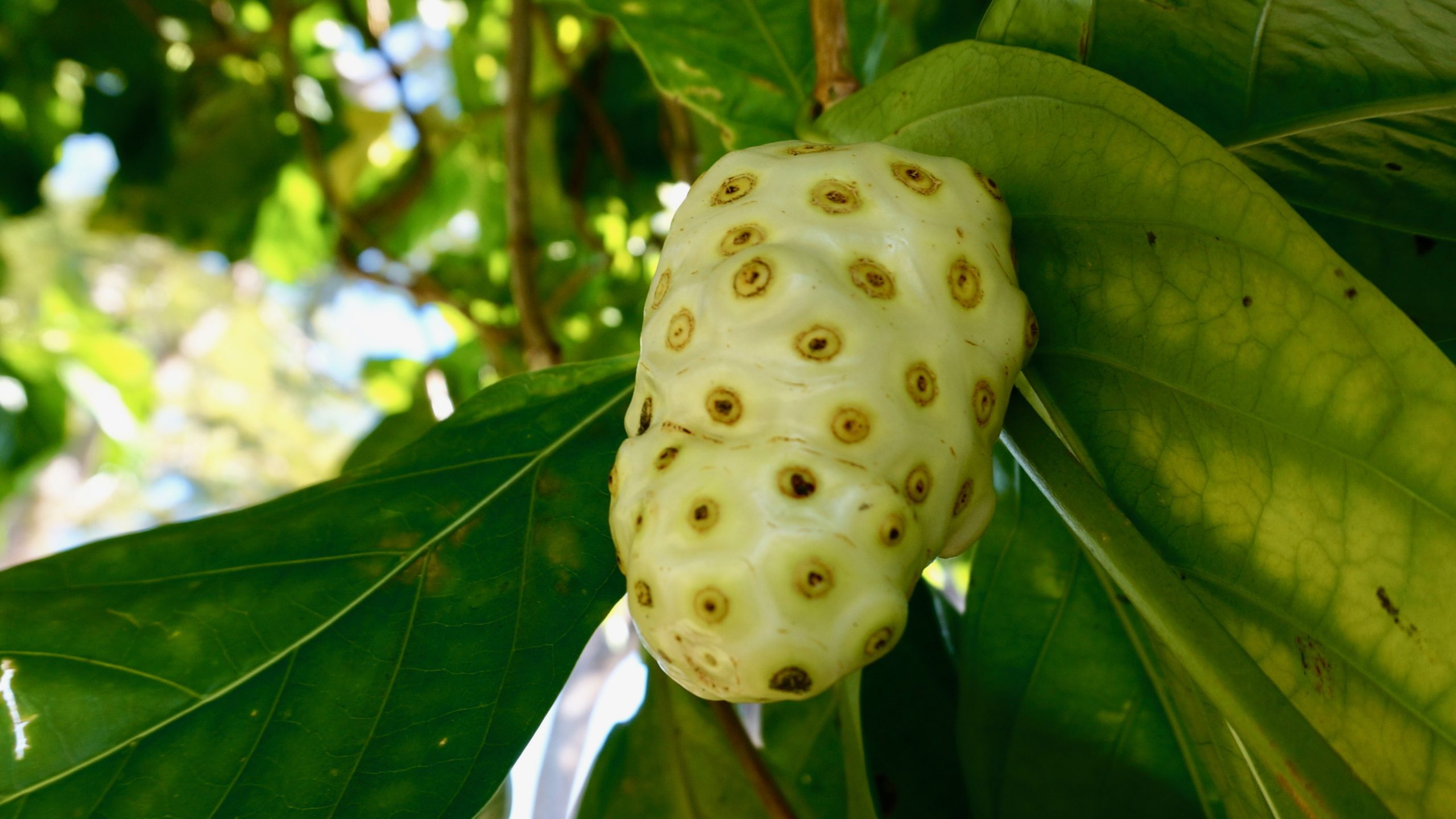
Growth Habit of the Noni Tree
The noni grows on a tree, which makes it a perennial species. The tree has soft wood, grows rapidly, and can reach up to 30 feet tall. This makes it a good pioneer species that can be used to restore degraded land. The tree has a deep taproot and many lateral roots that can sprout new noni plants. The large, green, and glossy leaves have an opposite growth pattern. The tree also handles heavy pruning well.
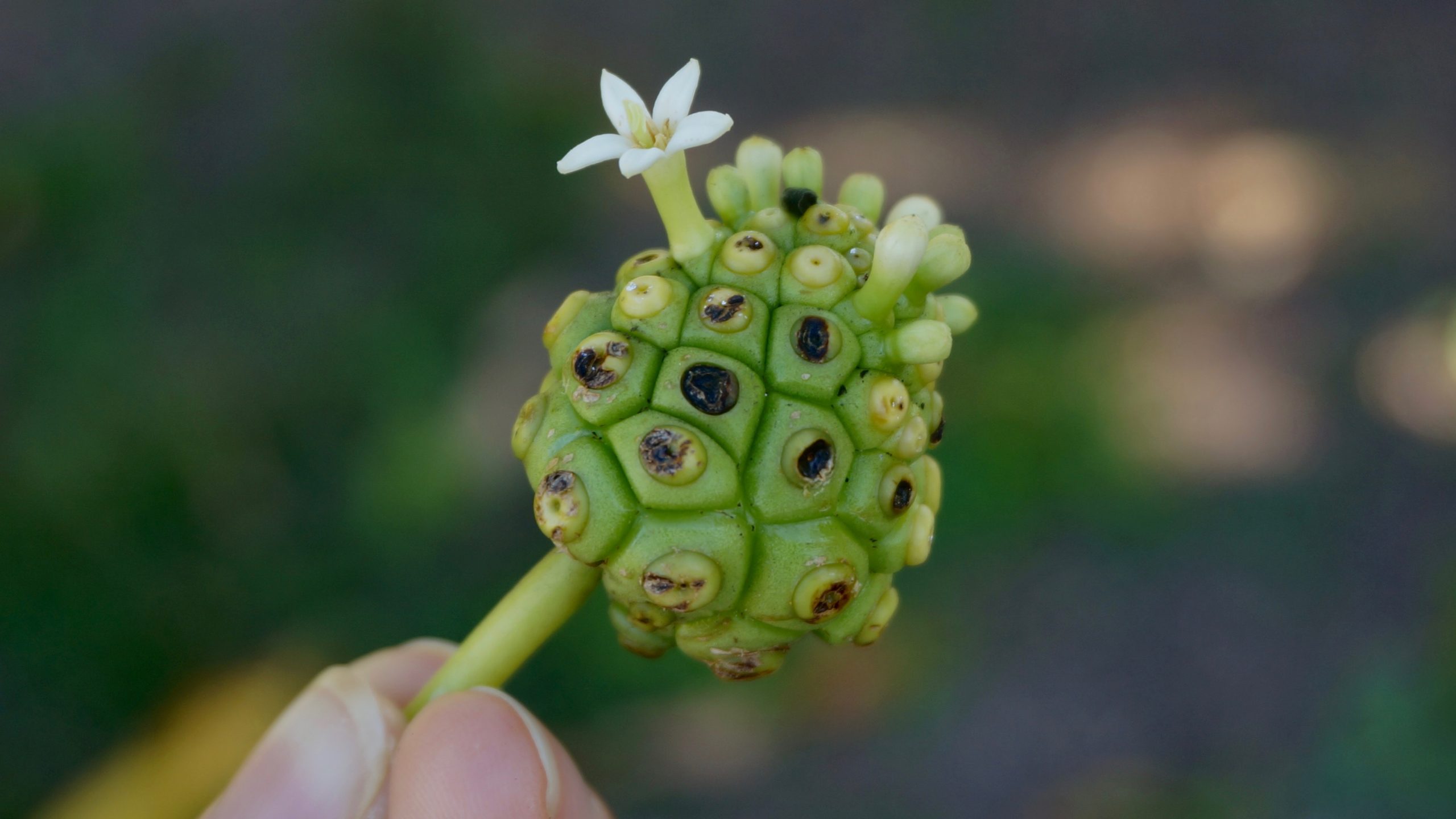
Growth Habit of Flower
The small white flowers grow to around a half an inch across. They have five petals and are self-pollinating. A mature tree can flower and fruit all year long. The flowers are borne on inflorescences that grow on the stems of tree.
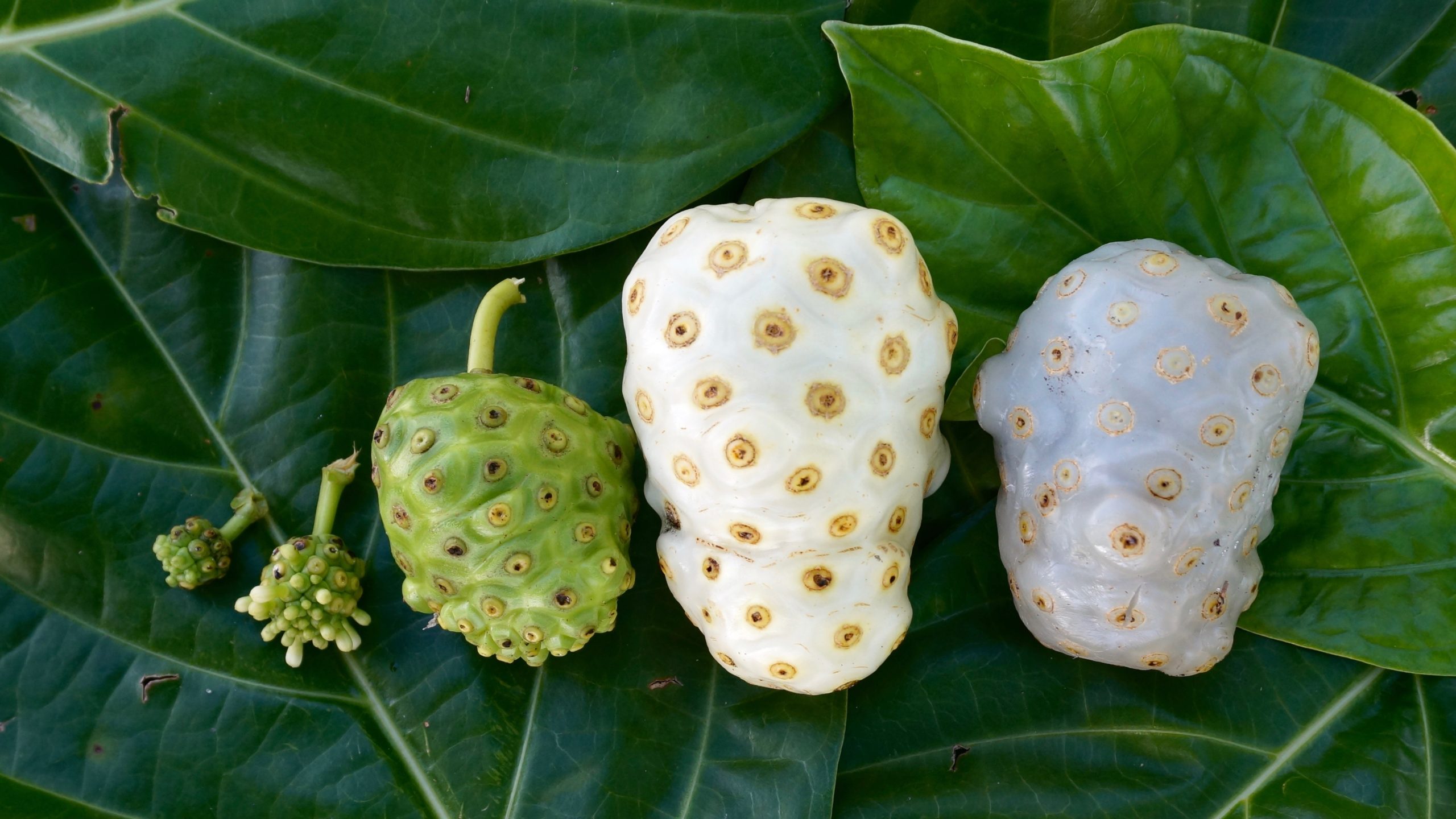
Growth Habit of Fruit
The noni fruit is a multiple fruit meaning that multiple pollinated flowers will mature into one fruit. The fruit starts out green and eventually turns a yellowish white. The ripe fruit is translucent, a grey-white color, and firm yet soft. The rings that cover the fruit are scars from where the flowers grew. Fruit size ranges widely, but a large fruit can measure around 7 inches long.
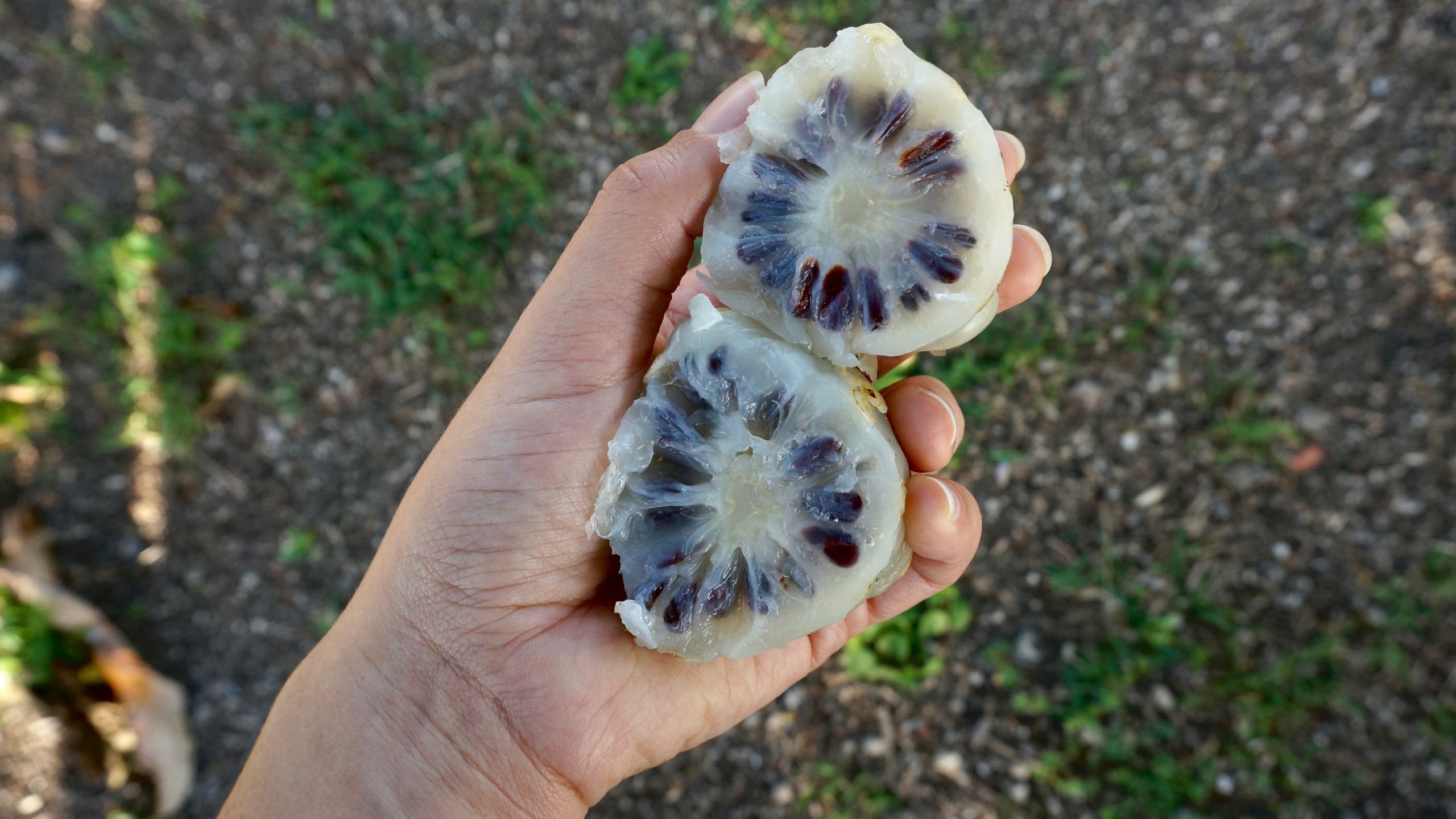
One fruit can contain over 100 brown triangular-oval shaped seeds. The seeds have an air pocket inside of them which allows them to float. In ideal conditions the noni tree will fruit all year long, however, fruit production is at its peak during the warmer months of the year. I must admit that I have not yet gained the courage to taste this fruit, but it is said to have a bitter and cheese like flavor. In some cultures it is used as a staple food, but in others the fruit is considered a famine food that is only eaten when other crops aren’t available.
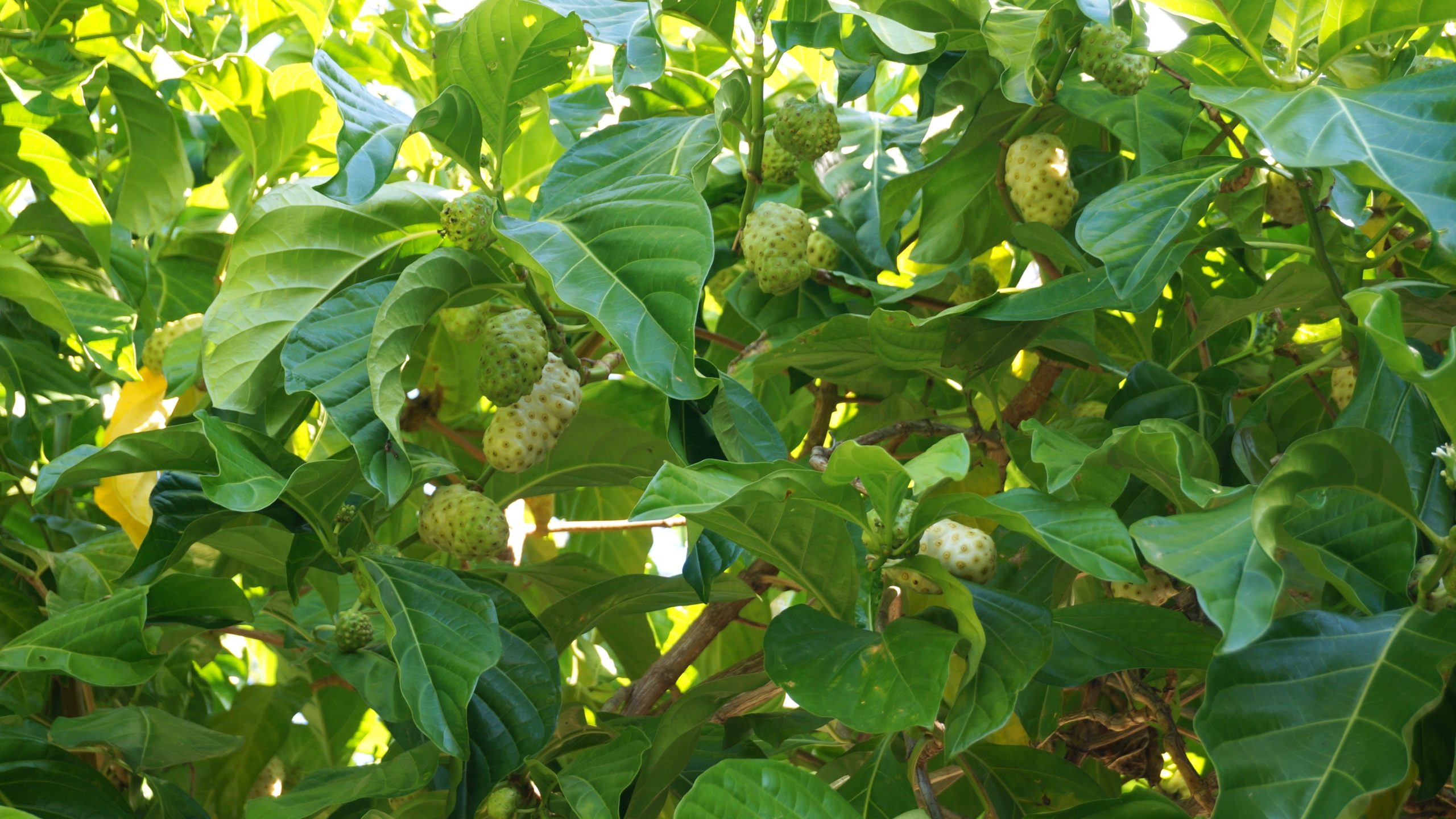
Growing Conditions
Noni trees are tropical trees that cannot withstand freezing temperatures. A young and unprotected tree will die if temperatures drop into the low 50s. Mature and established trees can withstand temperatures down into the 50s and perhaps even the 40s. The tree tolerates a wide range of soils and is even seen growing along beaches. A mature noni tree has moderate water requirements and is also drought tolerant. I believe that noni trees can make a good candidate for container growing since they will fruit even while small and are tolerant of many different growing conditions.
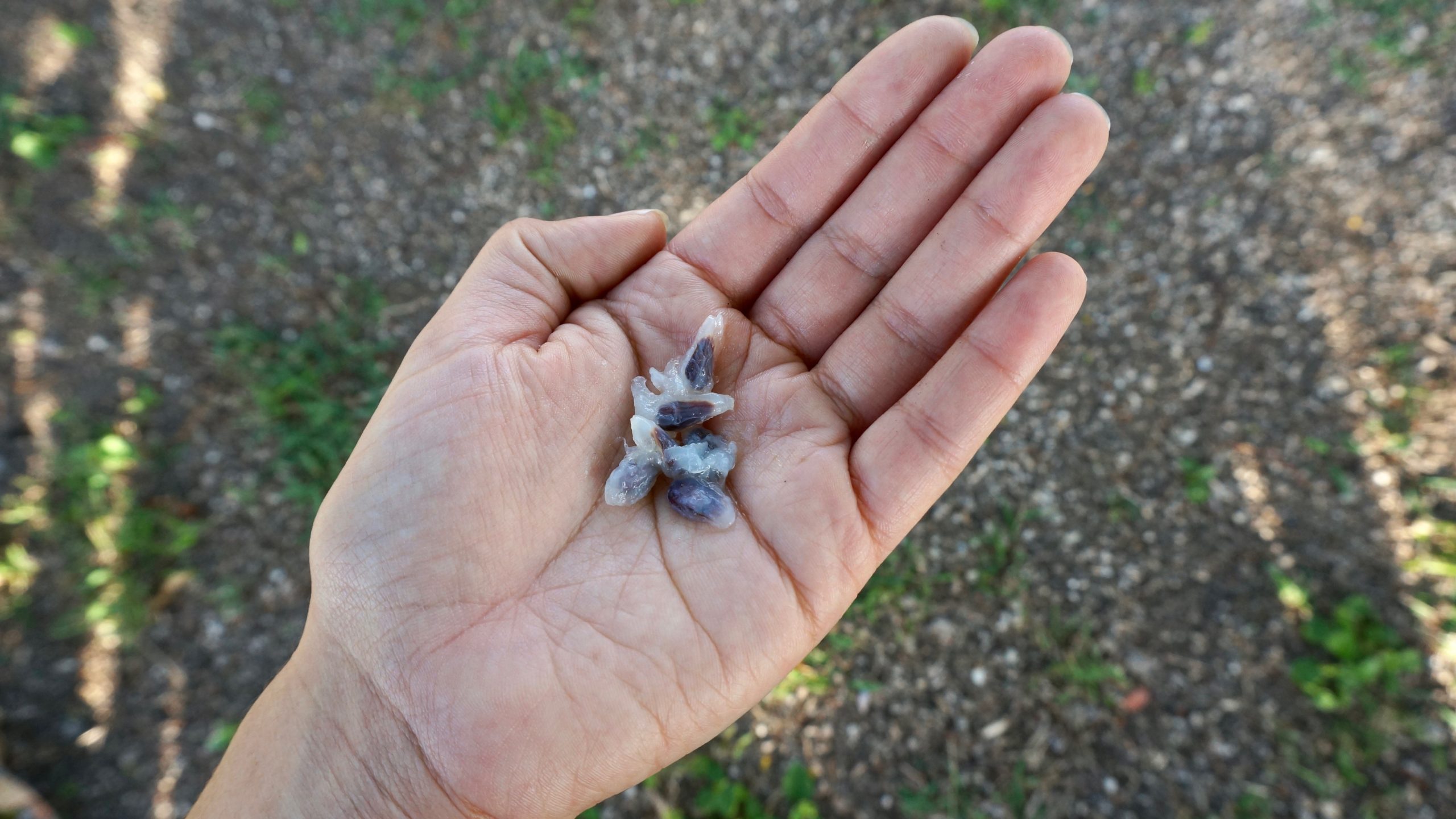
Propagation
Noni trees can be propagated by seed from fully ripened fruit. It is said that germination of the seeds takes a couple of weeks. It is recommend to soak the seeds in water and/or knick the seed coat before planting. I have had seeds germinate quickly only by soaking them in water and planting them into pots. Seeds can be stored for some time if they are properly cleaned and dried. Noni trees can also be propagated by stem cuttings, air layering, or by digging up any plants that have sprouted from a mature trees root system. In ideal conditions seed grown trees will produce in their second year while trees grown from vegetative propagation will produce earlier.
Pests
Noni trees are fairly pest resistant. I have not noticed any pests on our noni trees. However, they are supposedly susceptible to root knot nematodes.
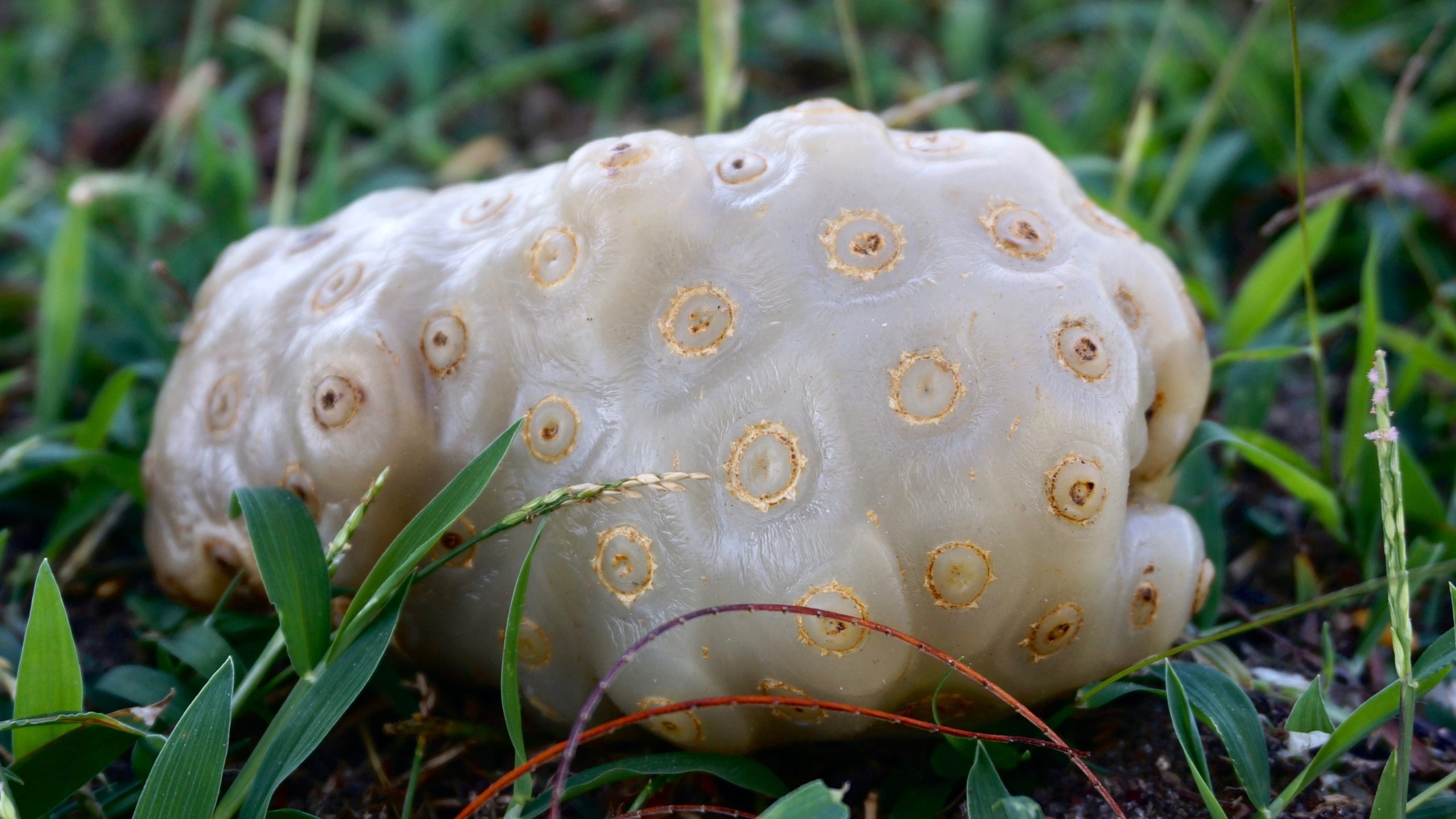
This noni is ready to eat.
Uses
There are many uses for the noni tree. Multiple parts of the tree are used for food or medical purposes. There are now many different medicinal noni products that are sold to consumers. A word of caution. There have been some cases where people consuming large amounts of noni juice or tea suffered from liver damage. So, I would be careful when consuming noni products in large amounts.

This noni is ready to harvest.
The fruit can be harvested when white but still firm or left to fully soften on the tree. Some eat the fruit while still firm while others eat it when soft. It can be eaten fresh, dried, cooked, or left to ferment into a juice. The seeds are sometimes eaten when eating the fruit itself, but they can also be separated from the flesh, roasted, and eaten. The leaves are used in some traditional cooked dishes or made into a tea. A red dye can be made from the leaves and a yellow dye from the root bark. Since the fruit is said to have a cheese like flavor I wonder if a small amount of the juice could be used to flavor homemade vegan cheese. I will have to try it one day.

The one on the left is ready to harvest. The one on the right is ready to eat.
Have you ever eaten a fresh noni fruit? That day for me hasn’t come yet, but I know it will eventually. You can check out other plant profiles by clicking here. You can also find me on youtube by clicking here.
Las semillas no se deben comer son tóxicas.
Ni sé debe cocinar el fruto para no perder el máximo de sus beneficios.
Se deja fermentar de 1 a 3 meses y se toma el jugo en ayunas lo que queda del fruto se extrae en un colador sin las semillas
@mary
you plant like a normal fruit'
to ferment it , what i do is i leave the seed on the tree until it drops by itself then put it in a jar for awhile
i have the tree in my compund
How do you plant noni? How do you ferment it, do you leave it in the water or just leave it in the water to drink?
There is no comment from my side but I want to share that this plant, the Morinda citrifolia, or Noni plant, is a well-known medicinal plant in South America, valued for its numerous health benefits. It is rich in antioxidants, vitamins, and minerals that support immune function, improve digestion, and promote well-being.
Is richly nutrition fruit
Thank you for the informative article
Can i use the pictures in to my Facebook page? i can link your publication for give you credit.
I've drank my ounce of None juice for over 30 years. My last batch was kind of watered down tasting, not that nice strong nasty non I love. My reputable Hawaiian supplier all these years explained it's because of all the rain they have had this year. Does that really happen? Before the fruit is picked it absorbs so much water that the final product is watered down? Maybe if your fermenting tanks were left out in the rain. What do think? In these days of shrinkflation, I'm skeptical.
I will need a cartoon of Noni juice and it fruits to plant in Nigeria
It’s hard to find clear directions for when to pick noni fruit, and your writing style and knowledge are perfect for someone wanting to know more about this fruit. I have a noni fruit tree and this is exactly what I wanted to know. Thank you for posting this.
How to get products
Why haven't you taste it yet?
Thank you so much for the info.
Where can one get seeds or seedlings in SA '?
And will it grow in The Garden Route area?
Thank you so much for the info.
Where can one get seeds or seedlings in SA '?
And will it grow in The Garden Route area?
Can it grow in any soil ? I have a black cotton soil, kenya.
What are the medical benefits of noni ? Or please give me a link to search about it ?
I know someone just starting to grow it in Bénin. He make juice.
Thanks a lot.
I need full details about NONI germination process.
Regard.
CHAPOROTO
I have only done it once. I soaked fresh seeds in water then I planted them. I think allowing them to ferment for a day or two would help to get a lot of the flesh off.
I used to live in Jamaica and my Jamaican friend used to get the fruit, put it in a plastic bag and let it ferment and drink the juice. It's good medicine. I had a doctor friend also that used to prescribe it for some things. She loved the taste of it. I've never tried eating it, only drinking the fermented juice and let me tell you it's the nastiest tasting and smelling stuff I've ever had! Seriously, it doesn't taste like cheese to me. It has a few names, one of them being Vomit fruit. But I love Noni because of its healing properties. I'm now living in upper Florida and I've got 5 small noni plants growing. They usually take more than a few weeks to germinate sometimes months even up to a year. But they have an air chamber, you just nic the end and that speeds up germination. Also I soaked mine in water.
That is great to hear you are growing noni. I really do not like the smell of the fruit at all haha. My dog loves it though and sometimes I let him have a fruit but only sparingly. Thank you for sharing some seed germination tips! Happy growing!
nice information.so keep on posting some facts about noni..
BSY NONI JUICE
Thanks for reading!
The taste of this fruit noni juice is so yummy.. Nice post, maintaining healthy drinking habits can prevent many major diseases, so get your healthy diet plan today. Thanks for sharing.
Thank you for reading and commenting!
OK, you've got me curious. Now I really want to try noni fruit! They look beautiful. Let us know if you ever do decide to try a nibble, what your reaction was.
I definitely will eventually try it! They are productive even while small. You could probably grow one in a pot and put it somewhere warm in the winter.